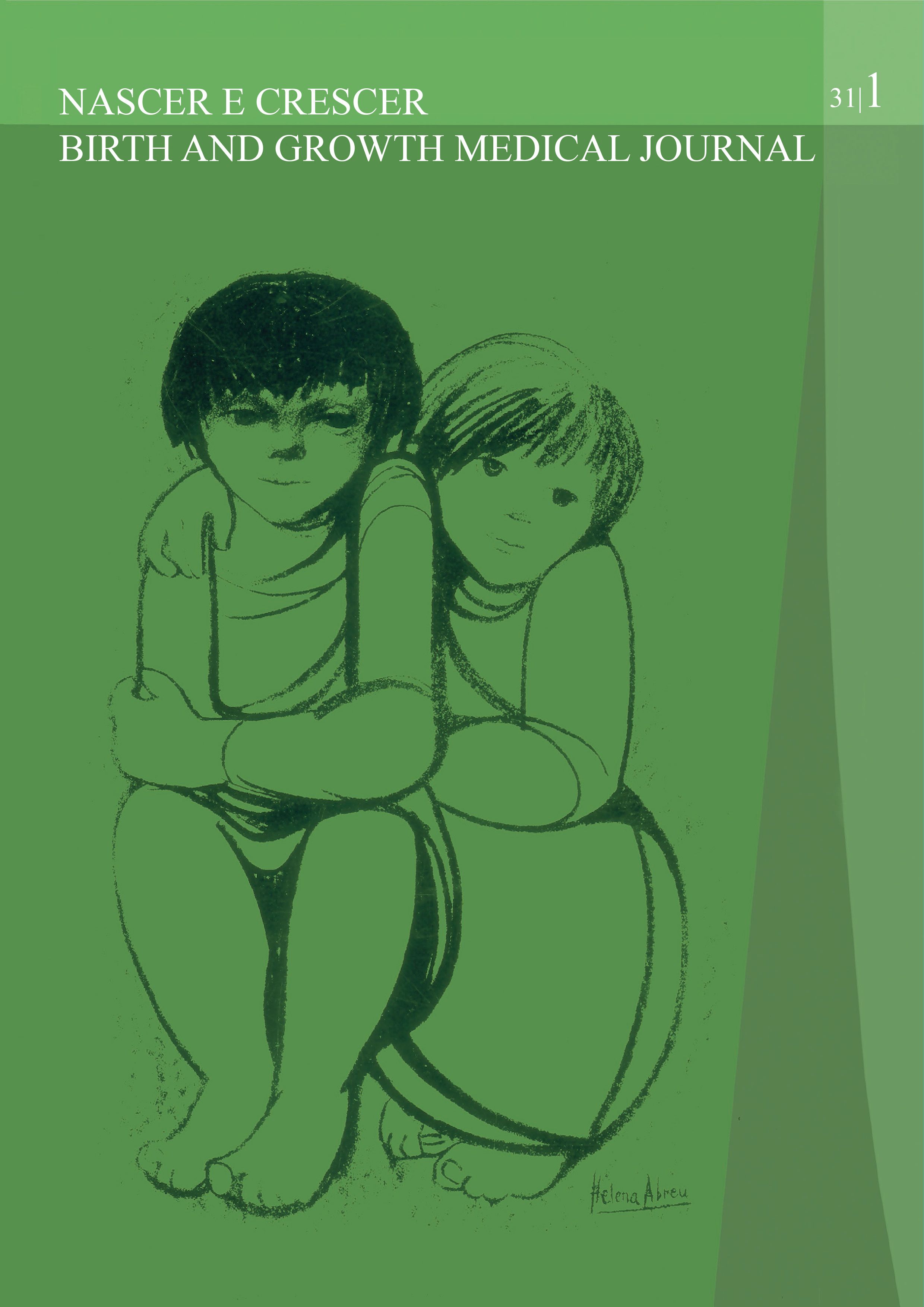Pulmonary clinical case
DOI:
https://doi.org/10.25753/BirthGrowthMJ.v31.i1.19381Keywords:
acute pulmonary edema, acute respiratory distress, adolescent, extubation, pulmonary edemaAbstract
Post-extubation acute pulmonary edema (PEAPE) is an uncommon complication of tracheal extubation, occurring in 0.1% of patients undergoing general anesthesia. It has rarely been described in pediatric age, but its incidence is thought to be underestimated, as many cases of post-operative respiratory distress may be misdiagnosed or unrecognized.
A formerly healthy 15-year-old male diagnosed with acute appendicitis was submitted to a laparoscopic appendectomy under general anesthesia. Immediately after extubation, he developed signs and symptoms of respiratory distress, and chest radiograph was compatible with acute pulmonary edema. Due to suspicion of PEAPE, supplementary oxygen and intravenous furosemide were administered, with favorable outcome.
PEAPE is a major anesthesia-related emergency, which may worsen the prognosis of low-risk surgical procedures.
A high degree of suspicion should be maintained in children and adolescents presenting with signs of respiratory distress and hypoxia after general anesthesia, as prompt diagnosis and treatment are crucial for a favorable outcome.
Downloads
References
Castro ML, Chaves P, Canas M, Moedas ML. Edema agudo do pulmão post-extubação traqueal – Caso clínico. Rev Port Pneumol. 2009; 15(3):537-41.
Zurda T, Muzha D, Dautaj B, Kurti B, Marku F, et al. Acute postoperative negative pressure pulmonary edema as complication of acute airway obstruction: case report. J Anesth Clin Res. 2016; 7:603.
Perez RO, Bresciani C, Jacob CE, Perez CG, Coser RB, et al. Negative pressure post-extubation pulmonary edema complicating appendectomy in a young patient: case report. Curr Surg. 2004; 61(5):463-5.
Udeshi A, Cantie SM, Pierre E. Postobstructive pulmonary edema. J Crit Care. 2010; 25:508e1-508.e5.
Ricardo J, Anarya MJ, Barbosa M, André N, Magno P, et al. Forma rara de edema pulmonar agudo: a propósito de um caso clínico. Rev Port Cardiol. 2011; 30(10):799-801.
Mulkey Z, Yarbrough S, Guerra D, Roongsritong C, Nugent K, Phy MP. Postextubation pulmonary edema: a case series and review. Respir Med. 2008; 102(11):1659-62.
Bhaskar B, Fraser JF. Negative pressure pulmonar edema revisited: pathophysiology and review of management. Saudi J Anaesth. 2012; 5(3):308-13.
Bhattacharya M, Kallet RH, Ware LB, Matthay MA. Negative-pressure pulmonary edema. Chest. 2016; 150(4):927-33.
Orliaguet GA, Gall O, Savoldelli GL, Couloigner V. Case scenario: Perianesthetic management of laryngospasm in children. Anesthesiology. 2012; 116:458-71.
Bajwa SJS, Kulshrestha A. Diagnosis, prevention and management of postoperative pulmonary edema. Ann Med Health Sci Res. 2012; 2(2):180-5.
Pikkers P, Dormans TPJ, Russel FGM, Hughes AD, et al. Direct vascular effects of furosemide in humans. Circulation.1997;96:1847-52.
Downloads
Published
How to Cite
Issue
Section
License
Copyright (c) 2022 Catarina Amaro, Pedro Protásio, Carlos Rodrigues, Sofia Ferreira

This work is licensed under a Creative Commons Attribution-NonCommercial 4.0 International License.
Copyright and Authors' Rights
All articles published in Nascer e Crescer - Birth and Growth Medical Journal are Open Access and comply with the requirements of funding agencies or academic institutions. For use by third parties, Nascer e Crescer - Birth and Growth Medical Journal adheres to the terms of the Creative Commons License "Attribution - Non-Commercial Use (CC-BY-NC)".
It is the author's responsibility to obtain permission to reproduce figures, tables, etc. from other publications.
Authors must submit a Conflict of Interest statement and an Authorship Form with the submission of the article. An e-mail will be sent to the corresponding author confirming receipt of the manuscript.
Authors are permitted to make their articles available in repositories at their home institutions, provided that they always indicate where the articles were published and adhere to the terms of the Creative Commons license.


